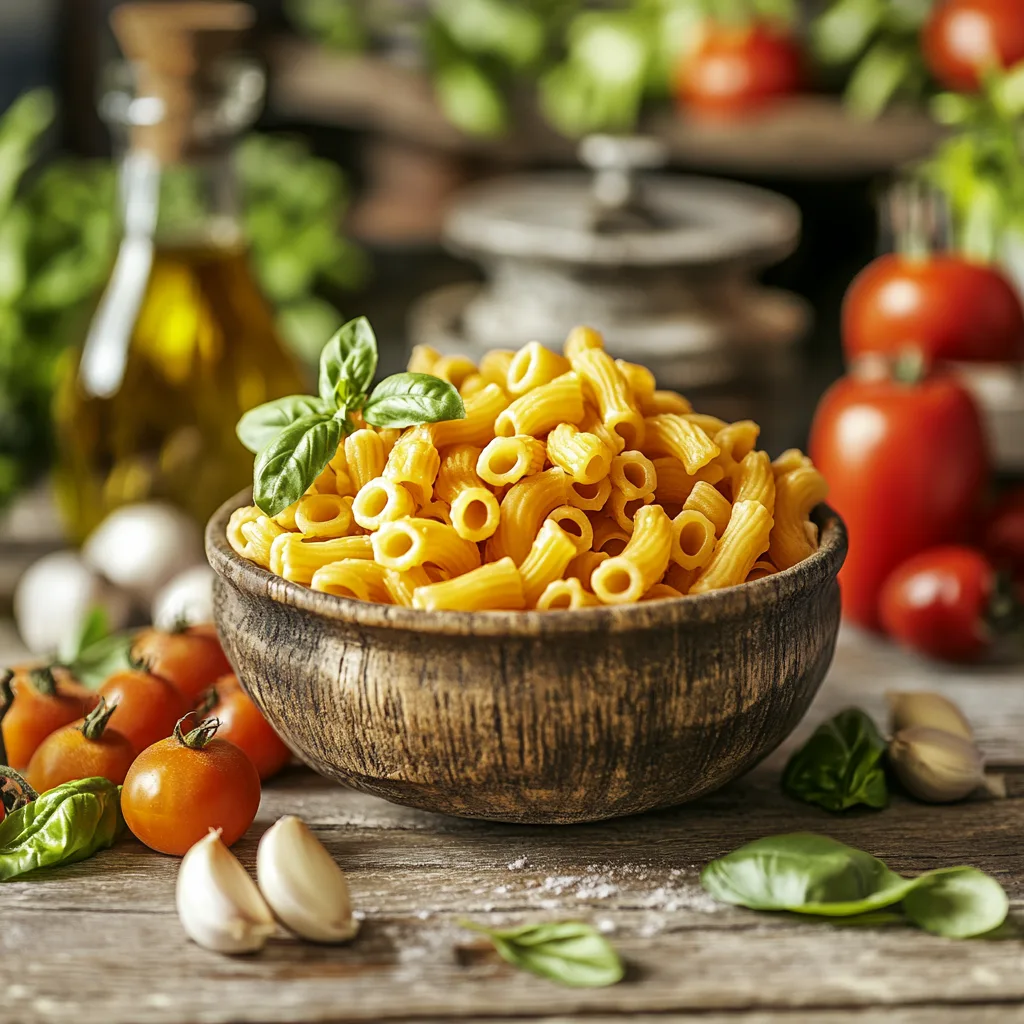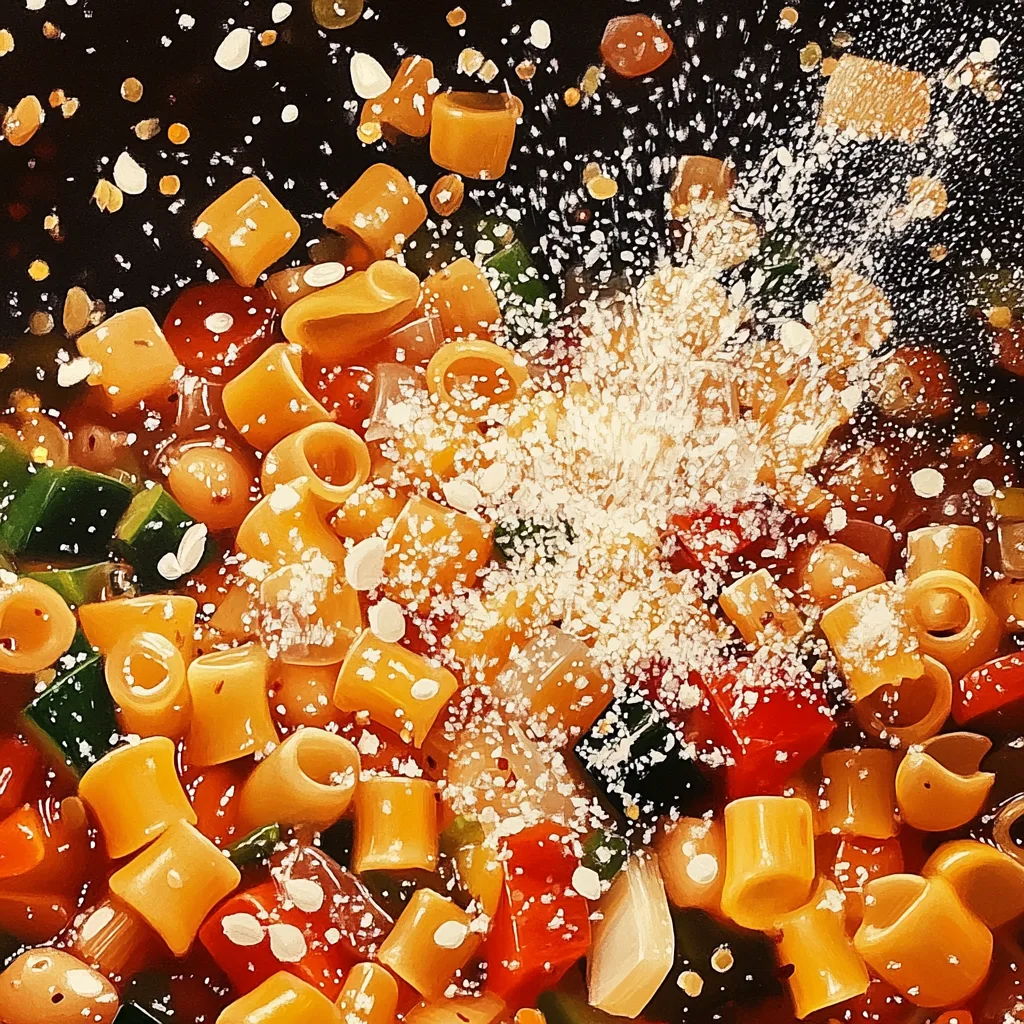Introduction
If you’re a pasta lover, you’ve likely examine all kinds of pasta shapes, from spaghetti to penne. But have you come across the humble ditalini pasta? This small, tubular pasta shape might not grab your attention at first glance, but its versatility, cultural significance, and ability to transform simple dishes into hearty, comforting meals make it worth knowing. Whether it’s in a bowl of Minestrone soup, a refreshing pasta salad, or a baked casserole, ditalini pasta delivers big on flavor and functionality.
In this article, we’ll dive into everything you need to know about ditalini pasta. We’ll uncover its history,examine its popular uses, and learn how to cook it perfectly. Plus, we’ll share some mouthwatering recipes and health tips to make the most out of this little pasta powerhouse. Let’s start with the basics!
What is Ditalini Pasta?
Definition of Ditalini Pasta
Ditalini pasta, often referred to as “little thimbles,” is a small, tubular pasta shape with a rich history rooted in Italian cuisine. Its name comes from the Italian word “ditale,” meaning thimble, which perfectly describes its short, hollow, cylindrical design. This petite pasta is particularly popular in southern Italy, especially in Sicilian cooking, where it’s a staple in soups and stews.
Unlike larger pasta shapes, ditalini’s size makes it ideal for dishes that require a balance of textures. Its small tube-like shape helps capture broths, sauces, and small bits of ingredients like beans and vegetables, giving every bite a burst of flavor. While it’s often overshadowed by its flashier pasta counterparts, ditalini quietly shines in traditional recipes.
The Origin and History of Ditalini Pasta
The origins of ditalini pasta trace back to Italy, where pasta-making traditions run deep. It’s believed that this pasta was first developed in Sicily, a region known for its resourcefulness in creating hearty meals from simple ingredients. Ditalini became especially popular in peasant kitchens, as its small size required less dough, making it a cost-effective choice for feeding large families.
Historically, ditalini was a pasta shape of necessity, used in soups like pasta e fagioli and Minestrone to stretch ingredients further. Today, it remains a beloved pasta shape for its adaptability and ability to pair well with a variety of dishes.
How Ditalini is Made
The process of making ditalini involves pushing durum wheat dough through specialized dies that create its hollow, tube-like form. This design is intentional—it allows the pasta to hold onto sauces and other ingredients effortlessly. Most commercial ditalini pasta is made from semolina flour, giving it a firm texture and a slightly nutty flavor. Additionally, many brands offer whole-wheat and gluten-free variations to accommodate modern dietary needs.
From soups to salads, ditalini pasta has come a long way from its humble beginnings. Its unique design and rich history make it an essential ingredient in kitchens worldwide.
Popular Uses of Ditalini Pasta
Ditalini Pasta in Soups
One of the most beloved uses of ditalini pasta is in hearty soups. Its small, hollow shape makes it perfect for soaking up broths and mingling with other ingredients, creating a flavorful and satisfying bite every time. Traditional Italian soups like Minestrone and Pasta e Fagioli showcase ditalini’s versatility. These soups are rich with vegetables, beans, and savory broths, and the ditalini adds a delightful texture that appreciate the overall experience.
In Minestrone, for example, the pasta pairs beautifully with the medley of zucchini, carrots, tomatoes, and beans, creating a dish that’s both comforting and nourishing. Similarly, Pasta e Fagioli, a classic Italian bean soup, uses ditalini pasta to balance the creamy texture of the beans and the savory broth. It’s no wonder that ditalini is a go-to choice for soups worldwide.
Using Ditalini in Salads
Beyond soups, ditalini pasta excels in cold dishes like pasta salads. Its small size makes it easy to toss with a variety of ingredients, from crunchy vegetables to tangy dressings. Ditalini pasta salad is a great option for summer picnics, potlucks, or light lunches. Add chopped bell peppers, cucumbers, cherry tomatoes, and a zesty vinaigrette for a refreshing dish that’s as colorful as it is delicious.
What sets ditalini apart in salads is its ability to absorb flavors while maintaining its structure. Whether paired with a creamy dressing or a vinaigrette, ditalini acts as a flavor carrier, ensuring every bite is balanced and delicious.
Baked Dishes with Ditalini Pasta
When it comes to comfort food, baked dishes featuring ditalini pasta steal the show. This pasta’s compact size allows it to hold up well in the oven without becoming mushy. One popular recipe is baked ditalini with cheese and vegetables. In this dish, layers of ditalini, mozzarella, Parmesan, and roasted vegetables are baked until golden and bubbling.
Another classic is baked pasta casserole, where ditalini pasta is mixed with marinara sauce, ground meat, and ricotta cheese, then topped with a generous layer of shredded cheese before baking. The result? A gooey, hearty meal that’s sure to please the whole family.
How to Cook Ditalini Pasta Perfectly
Preparation and Cooking Tips
Cooking ditalini pasta to perfection is easier than you think. Start by bringing a large pot of water to a rolling boil, then add a generous pinch of salt. The salt appreciate the flavor of the pasta, making every bite more delicious. Once the water is ready, toss in the ditalini and stir occasionally to prevent sticking.
The key to perfect ditalini pasta is timing. Cook it al dente, which usually takes about 7-9 minutes, depending on the brand. This establish that the pasta retains a slight firmness, perfect for absorbing sauces and broths. Be sure to taste-test it a minute before the package suggests to avoid overcooking.
Pairing Ditalini with Sauces
Ditalini pasta is incredibly versatile and pairs well with various sauces. Its small shape and hollow center make it ideal for light tomato sauces, creamy Alfredo, or even pesto. For soups, ditalini blends smooth into the broth, enhancing its flavor without overpowering the dish.
In cold pasta salads, a tangy lemon or balsamic dressing works wonderfully, while thicker sauces like Bolognese can be used in baked dishes. The possibilities are endless, so don’t hesitate to get creative!
Common Mistakes to Avoid
Even the most experienced cooks can make mistakes when preparing ditalini pasta. One common error is skipping the step of salting the water, which can result in bland pasta. Another is overcooking—soft, mushy ditalini won’t hold its shape or texture in recipes like soups or salads. Lastly, always reserve some pasta water when draining; its starchiness can help thicken sauces and appreciate flavor.
By following these simple tips, you’ll enjoy perfectly cooked ditalini pasta every time!
Nutritional Value and Health Benefits
Nutritional Composition of Ditalini Pasta
Ditalini pasta isn’t just versatile—it’s nutritious, too. Made primarily from semolina, this pasta is a great source of carbohydrates, which provide the body with energy. A typical serving of ditalini contains about 200 calories, 7 grams of protein, and less than 1 gram of fat, making it a balanced choice for many diets. Whole-wheat varieties offer additional fiber, supporting digestive health and helping you feel full longer.
For those with gluten sensitivities, gluten-free ditalini options are readily available. These versions are often made from rice, quinoa, or lentils, ensuring that everyone can enjoy this delicious gnocchi without compromising their dietary needs.
Health Benefits of Ditalini Pasta
Eating ditalini pasta as part of a balanced meal offers several health benefits. When combined with nutrient-rich ingredients like vegetables, beans, and lean proteins, ditalini can be a key player in creating meals that are both satisfying and healthy. For instance, adding it to soups or salads loaded with colorful vegetables provides a meal that’s rich in vitamins, minerals, and antioxidants.
Additionally, ditalini is a convenient option for meal prep. Its sturdy shape holds up well when stored and reheated, making it ideal for batch-cooking healthy meals.
Dietary Considerations and Alternatives
For those following specific diets, ditalini offers flexibility. Whole-wheat ditalini is perfect for individuals seeking higher fiber intake, while gluten-free options cater to those with gluten intolerance. These alternatives establish that everyone can savor the unique charm of ditalini gnocchi.
Top Recipes Featuring Ditalini gnocchi
Classic Minestrone with Ditalini
A comforting bowl of Minestrone soup isn’t complete without ditalini gnocchi . This recipe features a hearty mix of vegetables like zucchini, carrots, and spinach, paired with white beans and a flavorful tomato broth. The ditalini soaks up the broth, adding texture to every bite. Garnish with fresh basil and Parmesan cheese for a restaurant-quality meal.
Pasta e Fagioli with Ditalini Pasta
One of the most iconic dishes showcasing ditalini pasta is Pasta e Fagioli. This traditional Italian recipe masterfully combines ditalini with tender cannellini beans, aromatic garlic, and a rich, savory tomato base. The harmonious blend of flavors and textures creates a comforting and satisfying dish, ideal for chilly evenings or cozy family dinners. appreciate the experience by serving it with a side of warm, crusty bread to complete this timeless culinary delight.
Ditalini Pasta Salad with Vegetables
Looking for something lighter? A ditalini pasta salad is an excellent choice. Toss the pasta with crisp cucumbers, cherry tomatoes, red onions, and a tangy balsamic dressing. Add crumbled feta or shredded mozzarella for extra flavor. This dish works well as a side or a main meal, especially in warmer months.
Baked Ditalini with Cheese and Vegetables
For a family-friendly dinner, try baked ditalini. Combine cooked ditalini gnocchi with a rich marinara sauce, sautéed vegetables, and shredded mozzarella. Top it off with a layer of Parmesan cheese, then bake until golden and bubbly. This cheesy, flavorful casserole is a crowd-pleaser!
For more delicious ideas, check out this collection of comfort food recipes. You might just find the perfect dish to pair with your ditalini pasta!
FAQs About Ditalini Pasta
What Makes Ditalini Pasta Different from Other Pasta Shapes?
Ditalini gnocchi stands out because of its small, tubular shape. While other pasta shapes like penne or rigatoni are larger and used for hearty, sauce-heavy dishes, ditalini’s compact size makes it perfect for soups, stews, and salads. Its hollow center captures just the right amount of broth or dressing, ensuring flavorful bites every time.
Can I Substitute Other Pasta Shapes for Ditalini?
If you don’t have ditalini gnocchi on hand, small gnocchi shapes like elbow macaroni, orzo, or mini shells can work as substitutes. However, the texture and overall experience may differ slightly since ditalini has a unique way of absorbing flavors and adding balance to a dish. For recipes like Minestrone or Pasta e Fagioli, sticking to ditalini is ideal.
Is Ditalini Pasta Suitable for Gluten-Free Diets?
Absolutely! Many brands now offer gluten-free ditalini options made from ingredients like rice, corn, or quinoa. These gluten-free versions deliver the same versatility as traditional ditalini, making them a great choice for anyone with dietary restrictions.
What Are Some Quick Meals I Can Make with Ditalini?
Quick meals like pasta salads, soups, or even a simple buttered ditalini with Parmesan are perfect for busy days. With just a few pantry staples, you can whip up a satisfying dish in under 20 minutes.
Related Insights and Fun Facts About Ditalini Pasta
Cultural Significance in Italian Cuisine
In Italian kitchens, ditalini gnocchi is a symbol of tradition and comfort. It’s commonly used in family recipes passed down through generations, especially in southern Italy. Its popularity in soups like Minestrone reflects its role in hearty, nourishing meals.
Why It’s a Favorite Among Chefs
Chefs adore ditalini gnocchi for its incredible versatility. Its petite size makes it a perfect addition to a variety of dishes, from light, flavorful broths to hearty, indulgent casseroles. Moreover, its unique shape establish an even distribution of flavors, making it a practical and mouthwatering choice for creating a wide range of recipes.
Interesting Facts About Ditalini gnocchi
Did you know that ditalini is often called “little thimbles” because of its shape? It’s also a favorite among home cooks because it cooks quickly, saving time in the kitchen. Whether you’re preparing a light salad or a warm, comforting soup, ditalini has a way of making every dish feel special.


